-- The Kimberley from Kununurra to Derby
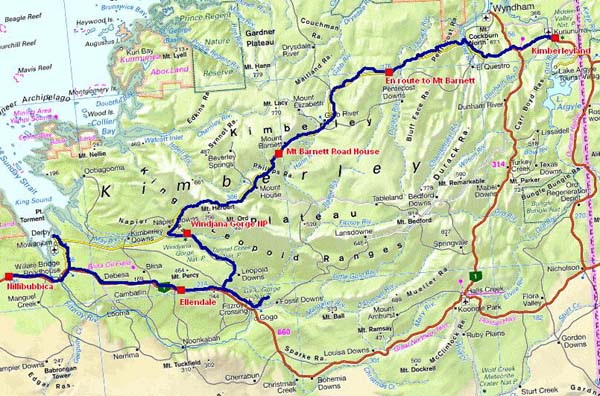
The road tracklog
from Kununurra to Derby
from 09/11 to 15/11/2009
The Kimberley
Kimberley, Australia's last frontier, is a upland region with dry and red landscapes. It is cut by rivers in deep gorges, the coast has the strongest tides in the southern hemisphere, the seasons present extremes like nowhere else.
On Monday 09/11, I spent most of the morning into Kununurra's Telecentre to publish pages of my website, to answer emails and to send messages to continue to inform the three problems to be solved by the end of the year. Then I moved towards Gibb River Road whose reputation is disastrous, very degraded. Moreover the Visitor Centre confirmed me again that many parks were closed, the tourist season was finished and the wet season had started. I persisted to head there. It was actually degraded with very breakable corrugated roadway. Landscapes were stunning in spite of a covered sky and a stagnant fog.
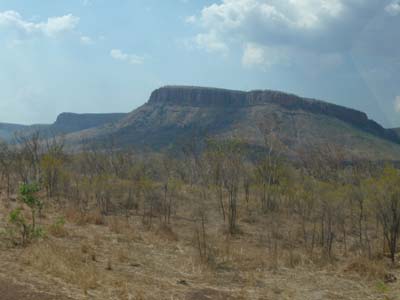
En route
Gibb River Road
09/11/2009
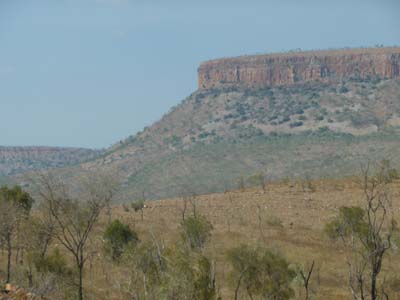
En route
Gibb River Road
09/11/2009
After the Pentecost River's ford I met machines of roadway surfacing, what happiness. I decided to bivouac in nature before the junction to Ellenbrae Station
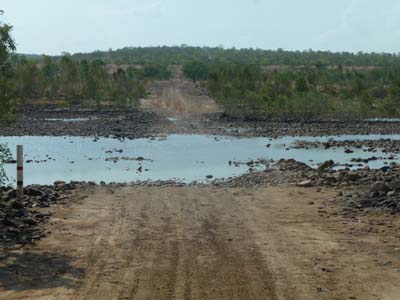
En route
Gibb River Road
09/11/2009
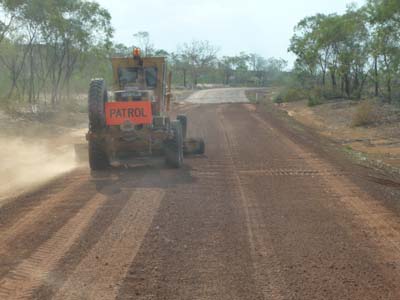
En route
Gibb River Road
09/11/2009
On this 10 November, I entered the wet season by full foot . The day was announced gloomy, it was it until the cloud covered sky bursts in cloudburst, it was monsoon. I had decided to establish the bivouac at Barnett Gorge where there was nothing to see if not a boab tree, but the dangerously getting darkened sky I returned on Gibb River Road to go to the MT Barnett Road House, closed due to wet season!!! I bivouacked on the softened carpark. Throughout Gibb R.R. tourist sights were either closed or inaccessible by the impracticable tracks. I decided to extract me as soon as possible from this muddy cesspool.
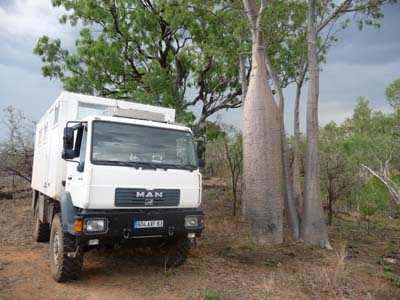
En route
Barnett Gorge
10/11/2009
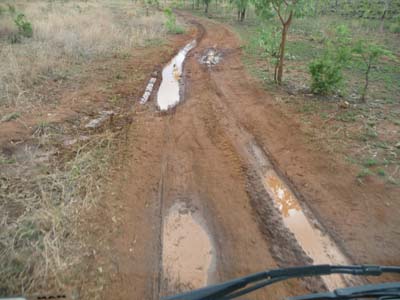
En route
to Barnett Gorge
10/11/2009
Manning Gorge's camp-site was closed, but I was authorized to go on foot to visit it, that is to say fourteen kilometres return as ten kilometres return to go to the water falls, without water. Left at 9.00 am I was back before the rain around 4.00 pm, harassed by heat. I must say that it is not really the season to visit this area. It is preferable to come as in May at the end of the wet season when the rivers are water mouthfuls.
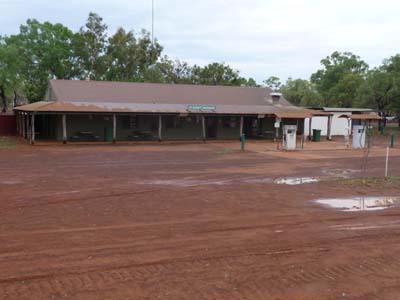
Mt
Barnett Road Housee
11/11/2009
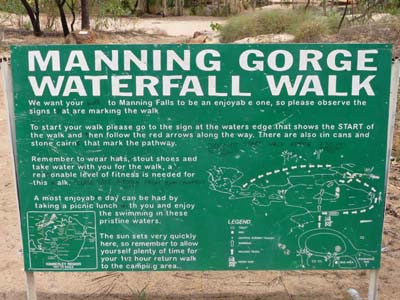
Manning Gorge
Mt Barnett Road Housee
11/11/2009

Manning Gorge
11/11/2009
Despite everything I took some good baths in the water hole at ambient temperature!
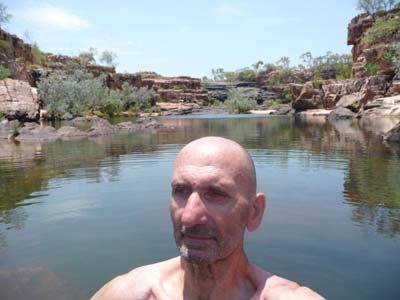
The bushman took bath
Manning Gorge
110/11/2009
The day after was still a day on “Gravel Road” on Gibb River Road. I must specify that sometimes the too sloping or too sinuous sections were sealed. Moreover a machine cut undulations of the track. I arrived around 4.30 pm at Windjana Gorge NP to establish my bivouac for two nights. I was alone, quiet.

Windjana Gorge NP
12/11/2009
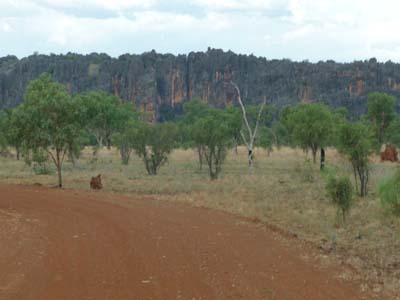
The Wall
Windjana Gorge NP
12/11/2009
As of daybreak before the heat I left for walking on the track. It was a rapture to discover fauna and flora in a natural state without human intervention. I saw a lot of birds but no crocodile, great disappointment.
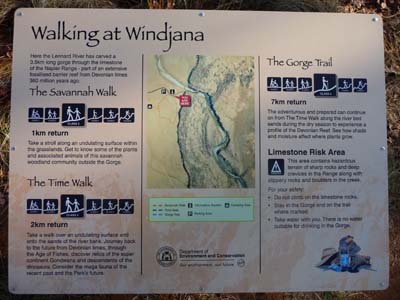
Windjana Gorge NP
13/11/2009
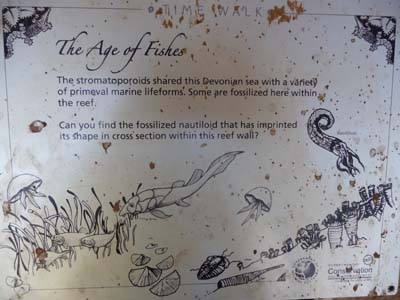
Windjana Gorge NP
13/11/2009
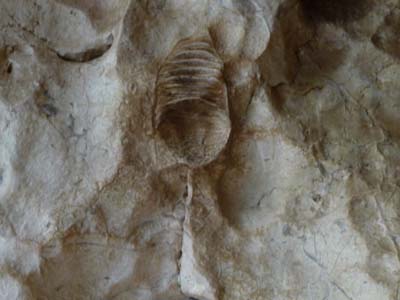
Fossilized nautiloid
Windjana Gorge NP
13/11/2009
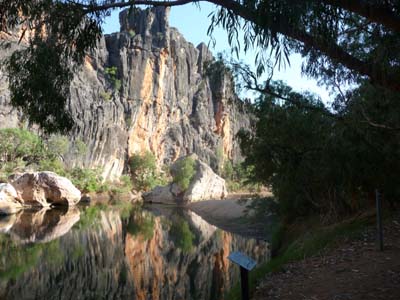
The Wall
Windjana Gorge NP
13/11/2009
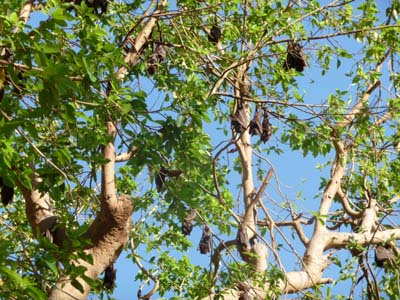
Bats
Windjana Gorge NP
13/11/2009
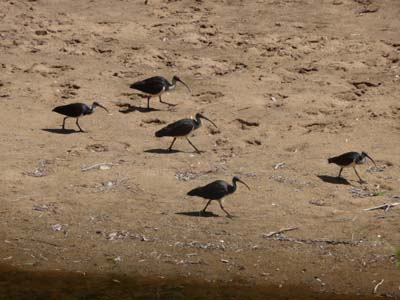
?
Windjana Gorge NP
13/11/2009
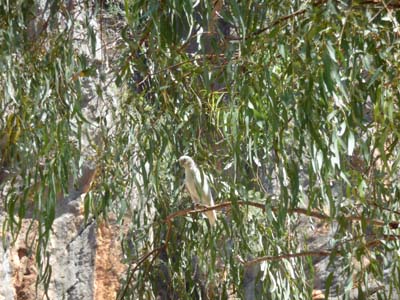
?
Windjana Gorge NP
13/11/2009
At the end of trail I took a picture in position of Chacmool, sculpture post-Toltec at Chichen Itza, Mexico. Back to the camp I had rest of this bucolic adventure.
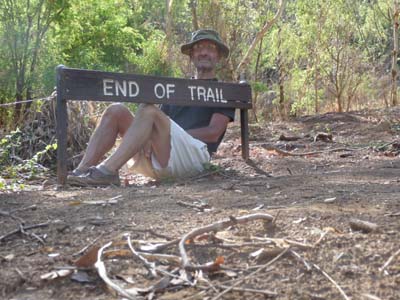
The bushman in Chacmool
Windjana Gorge NP
13/11/2009
This day of November 14 was not registered in the inheritance of my memory. Fairfield Leopold Downs Road was acceptable, the corrugated roadway had been cut. Sights of the day were not outstanding. Initially Lillimooloora Police Station, historical ruin of 1893, was not worth the 20 meters of detour from the main track. Then 35 kilometres far away I stopped to visit a very famous Tunnel Creek. Well, it is a natural excavation with an underground water and concretions. The entry requires a walking in the falls. The obliged picture is a back-light from the interior of the entry.
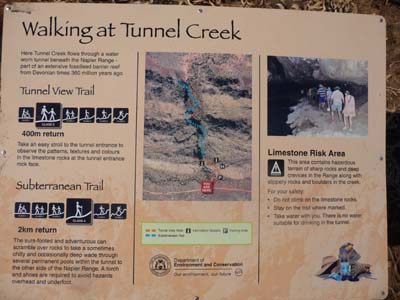
Tunnel Creek
14/11/2009

The Wall
Tunnel Creek
14/11/2009
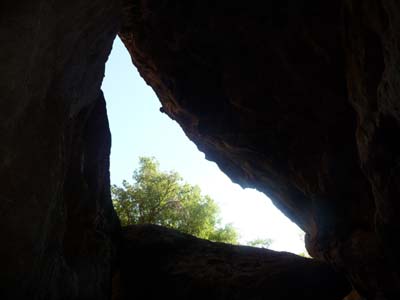
Tunnel Creek
14/11/2009
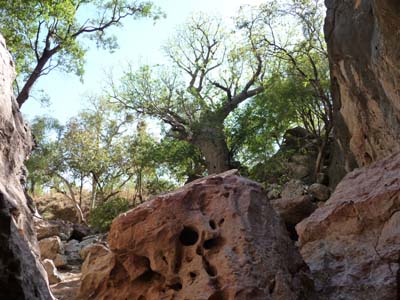
Tunnel Creek
14/11/2009
I had decided to go to see what the Lp calls “a true outback town”, the village of Fitzroy Crossing with 1100 inhabitants. They are two petrol stations on the Great Northern Hwy and some modern houses with water solar-heater and air-conditioning. Aboriginals spent time in the shade under trees. I had lunch in Geikie Gorge NP where the carpark is at 10 minutes away at the edge of the river!
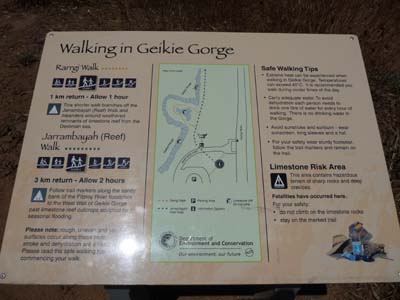
Geikie Gorge NP
14/11/2009

Fitzroy River
Geikie Gorge NP
14/11/2009
After a walk on the spot I moved towards my bivouac at approximately 90
kilometres away, Ellendale RA where I was welcomed by evening visitors coming
to drink some water I gave them.
From Fitzroy Crossing to Derby the road is full west, the temperature in the
cabin was 38°C with air-conditioning. On arrival at Ellendale the temperature
in the cell was 42°C and that under the truck 49°C. At 08.00 pm it was still
38°C in the cell and at 5.00 am 27°C. Fortunately there was wind which got a feeling
of freshness.
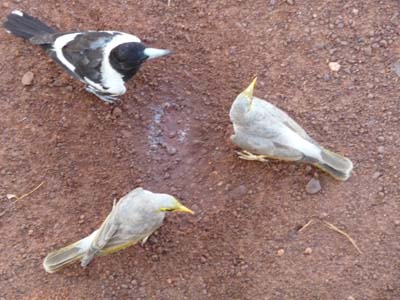
Evening visitors
14/11/2009
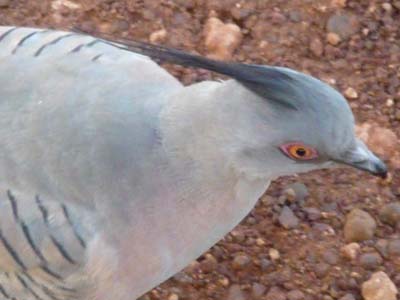
Evening visitor
14/11/2009
Briefly, Australia has two types of antiquity, the first ones natural several million years, the second ones colonial at the end of the 19th century. During the trip in Kimberley I visited the first ones since Fitzroy Crossing I approached the seconds ones. On 15/11, on the way towards Derby term of Savannah Way I stopped on a rest area to see an enormous Boab Tree. At the junction between Gibb River Road and Derby Road is the second Prison Boab Tree in Kimberley which imprisoned several aboriginals before a construction of a Old Derby Gaol. The road finishes at the Warf which was in wood with a tram for the carriage of people and goods. In two hours I had done the drive of sights in Derby, village of 5000 inhabitants which was an important port in the 19th century.
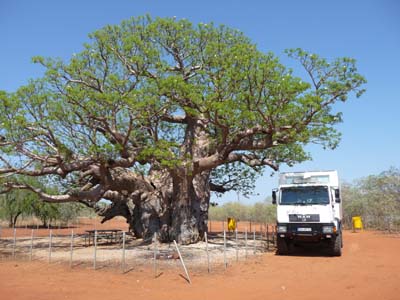
The Boab Tree
en route
15/11/2009
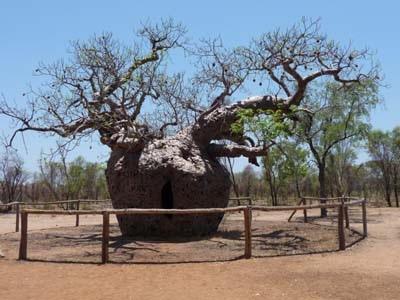
Prison Boab Tree
Derby
15/11/2009
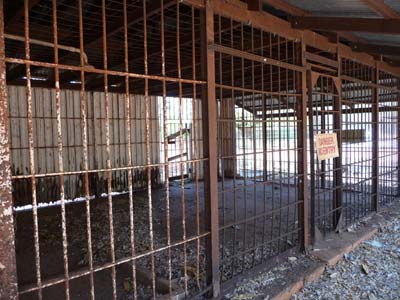
Old Derby Gaol
Derby
15/11/2009
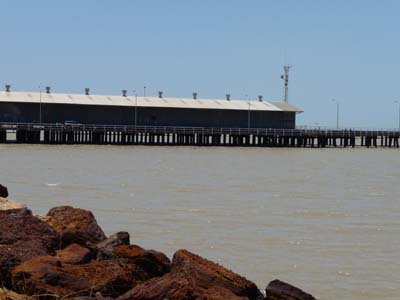
The Warf
Derby
15/11/2009